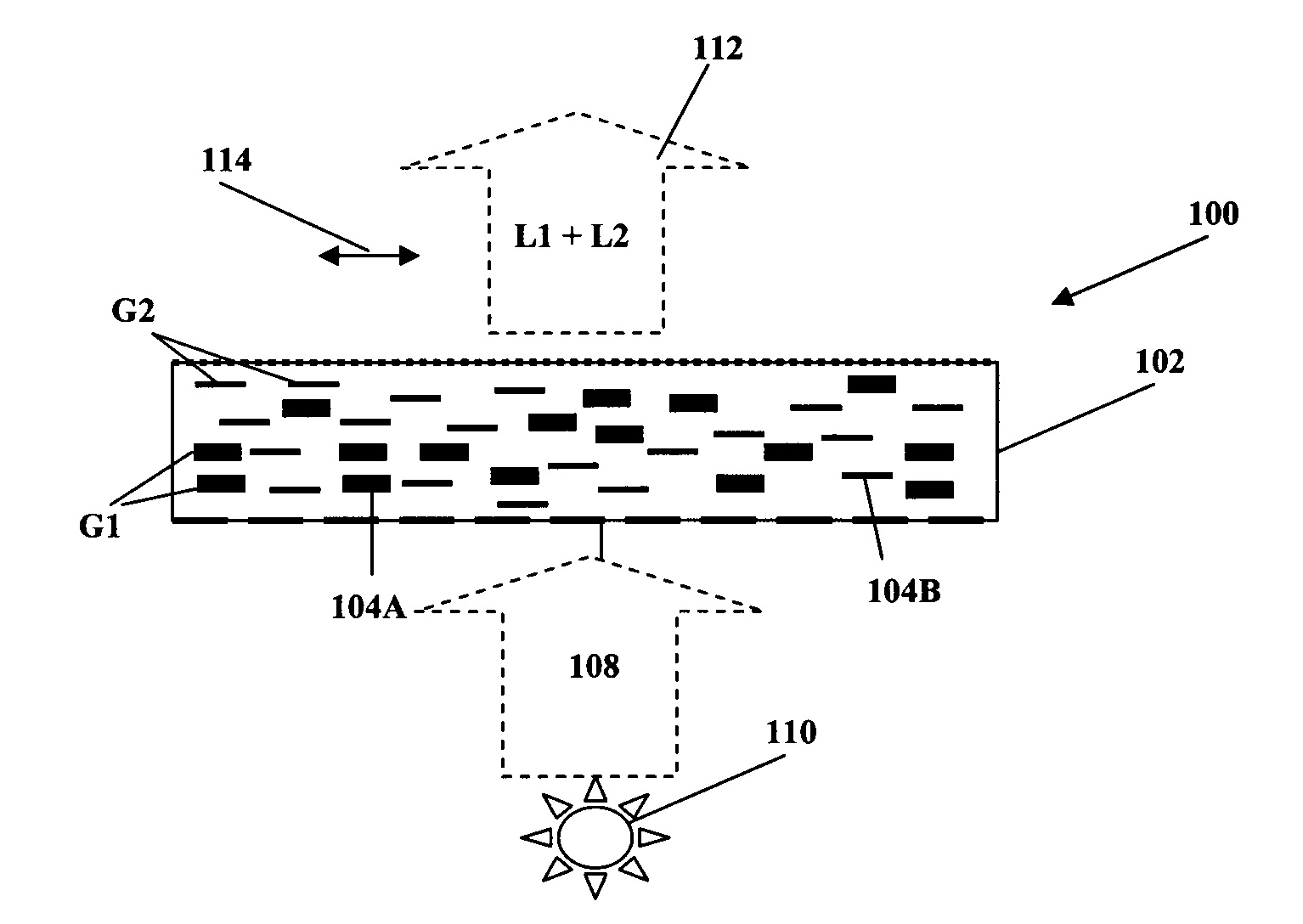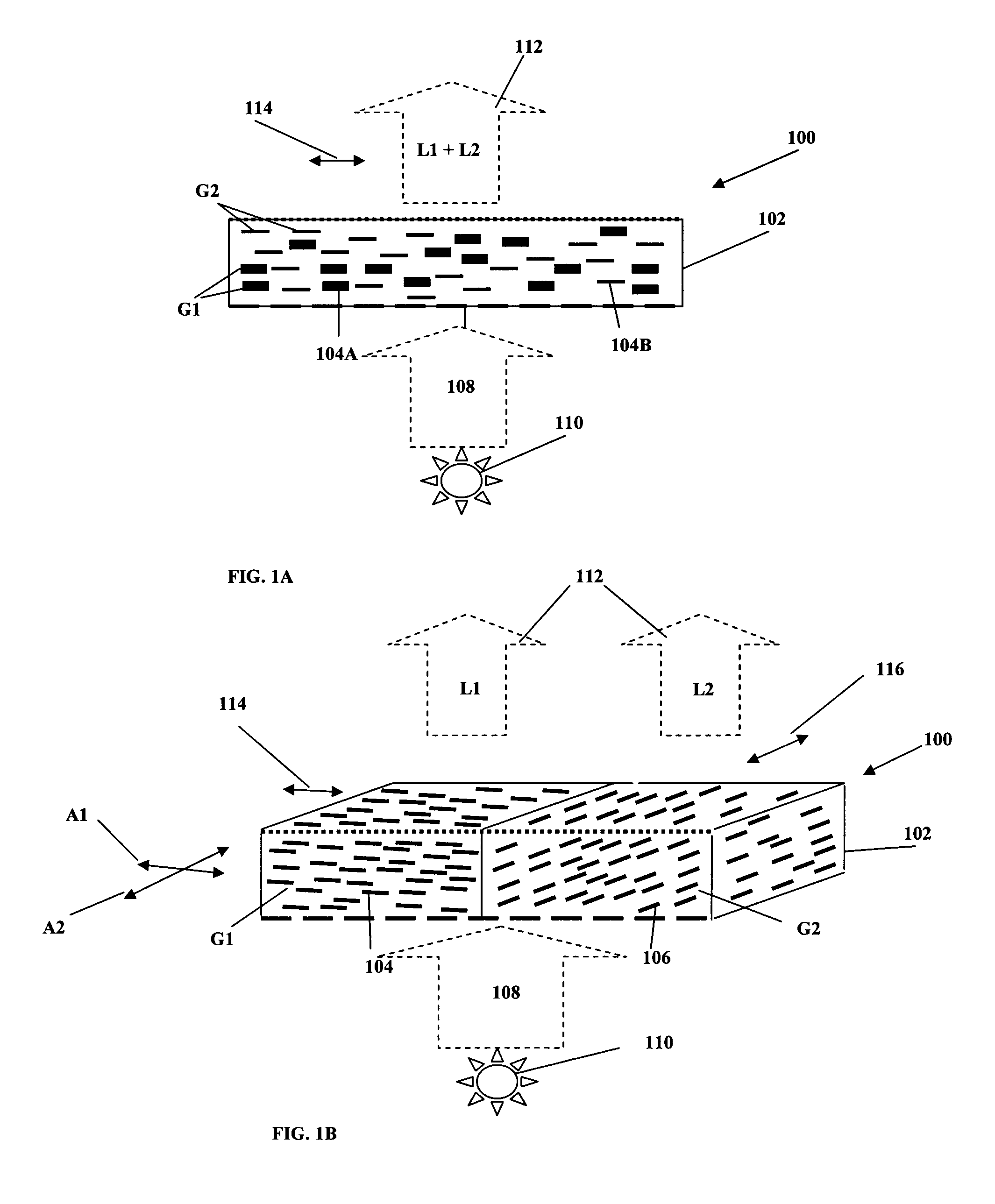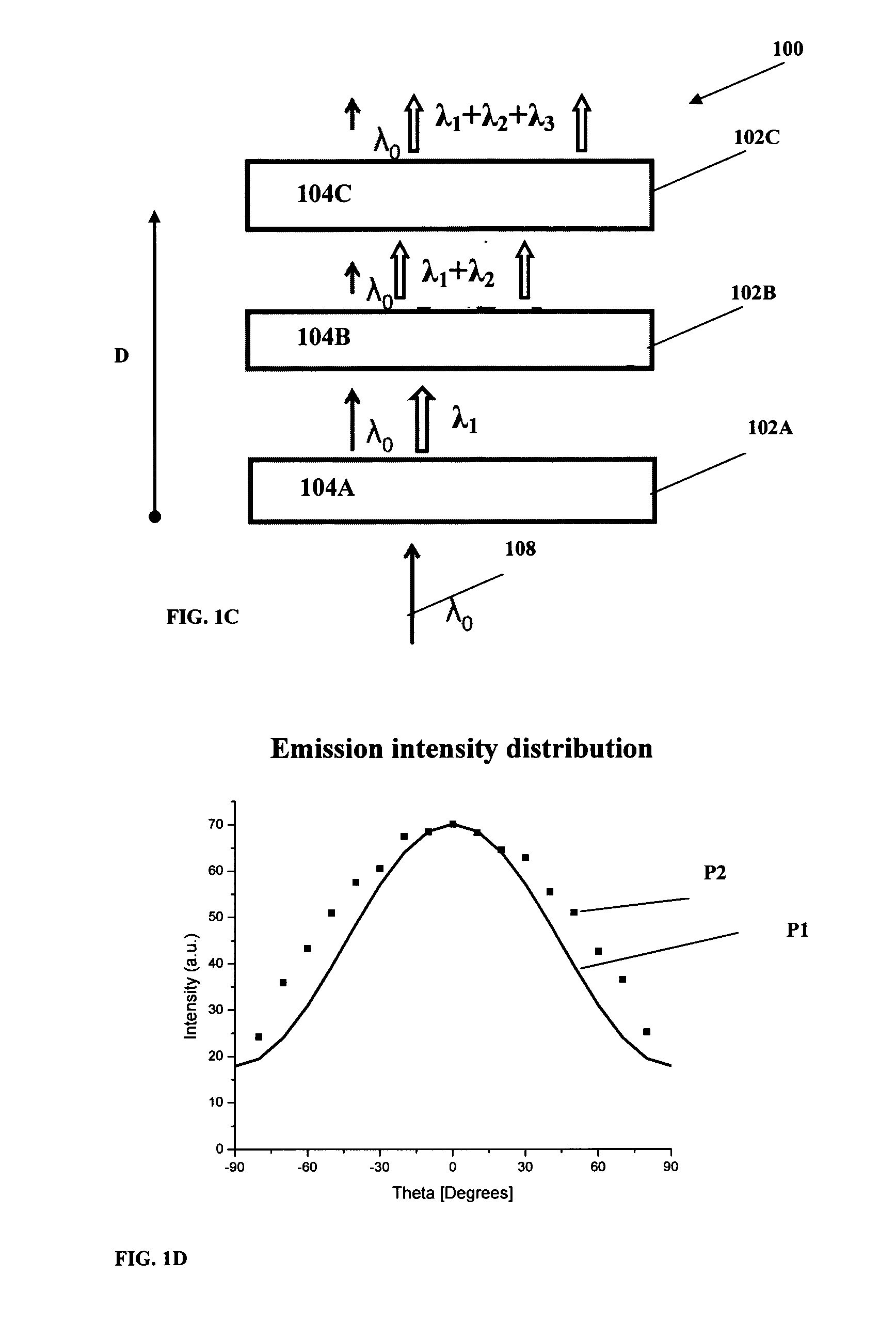Polarizing lighting systems
a technology of lighting system and polarizer, which is applied in the direction of lighting and heating apparatus, instruments, spectral modifiers, etc., can solve the problems of increasing the difficulty of polarizing the ligh
- Summary
- Abstract
- Description
- Claims
- Application Information
AI Technical Summary
Benefits of technology
Problems solved by technology
Method used
Image
Examples
example 1
[0085]An optically active structure comprising aligned nanorods within a polymer matrix was prepared. The rods were aligned within a polymer film by mechanical stretching of the polymer film. As a first step, the nanorods were mixed with a monomer solution of polyvinylbutyral (PVB, 200 mg) and toluene (2.4 ml). The nanorods concentration in the film was controlled by the amount added to the film, typically in the range of 0.5-3% by weight of the PVB weight. A non-scattering mixture could be obtained. A block was then cast from the polymer / nanorod melt into a mold and allowed to dry under vacuum for 12 hours, yielding a film of 1 inch in diameter and 0.4 mm thickness. For the stretching step, the block was placed in a mechanical stretching device. During the stretching the sample was heated to 110° by placing an Infra-red emission lamp in front of the sample. The sample was then stretched anistropically by pulling it slowly (0.5 mm / minute) in one direction. Once the film was elongate...
example 2
[0089]An optically active structure comprising stand-alone nanorods was prepared. The rods used were CdS rods with a CdSe seed, of dimensions 67×5 nm and emitting at 622 nm. The rods were aligned on a glass substrate or on polymer film. In a first method, nanorods were deposited on glass from solutions and were then aligned by a technique of rubbing by a velvet cloth. Alternatively, a solution of the rods was applied during the rubbing process. The velvet cloth directs the nanorods alignment preferentially along the direction of rubbing. This yields a layer with preferably aligned nanorods emitting light polarized preferably along the alignment axis. This could be used in a monochrome display.
[0090]A two-color back light unit for display that can be expanded to three color back light unit for display with the non-absorbed blue light emission passing through the film serving as the third color was demonstrated. A mixture of two samples of CdS rods with CdSe seeds of different dimensi...
example 3
[0094]An optically active structure comprising stand-alone nanorods was prepared. The rods were aligned on a glass substrate with patterned electrodes such as described in the above mentioned WO / 2010 / 095140 assigned to the assignee of the present application. In this method, nanorods were deposited on the glass from solutions while applying an alternating electric field between the electrodes. During drying of the solution, the nanorods were preferentially aligned parallel to the direction of the applied electric field. This yields a layer with preferably aligned nanorods emitting light polarized preferably along the alignment axis. Typical values for the polarization ratio were between 2 to 4.7, where each color emitter can have a different polarization ratio value according to the specific type of nanorod used, and the nanorods deposition and alignment conditions. To construct the back light unit, the above active anisotropic nanoparticle layer was placed on a blue emitting light ...
PUM
| Property | Measurement | Unit |
|---|---|---|
| thickness | aaaaa | aaaaa |
| thickness | aaaaa | aaaaa |
| aspect ratio | aaaaa | aaaaa |
Abstract
Description
Claims
Application Information
 Login to View More
Login to View More - R&D
- Intellectual Property
- Life Sciences
- Materials
- Tech Scout
- Unparalleled Data Quality
- Higher Quality Content
- 60% Fewer Hallucinations
Browse by: Latest US Patents, China's latest patents, Technical Efficacy Thesaurus, Application Domain, Technology Topic, Popular Technical Reports.
© 2025 PatSnap. All rights reserved.Legal|Privacy policy|Modern Slavery Act Transparency Statement|Sitemap|About US| Contact US: help@patsnap.com



